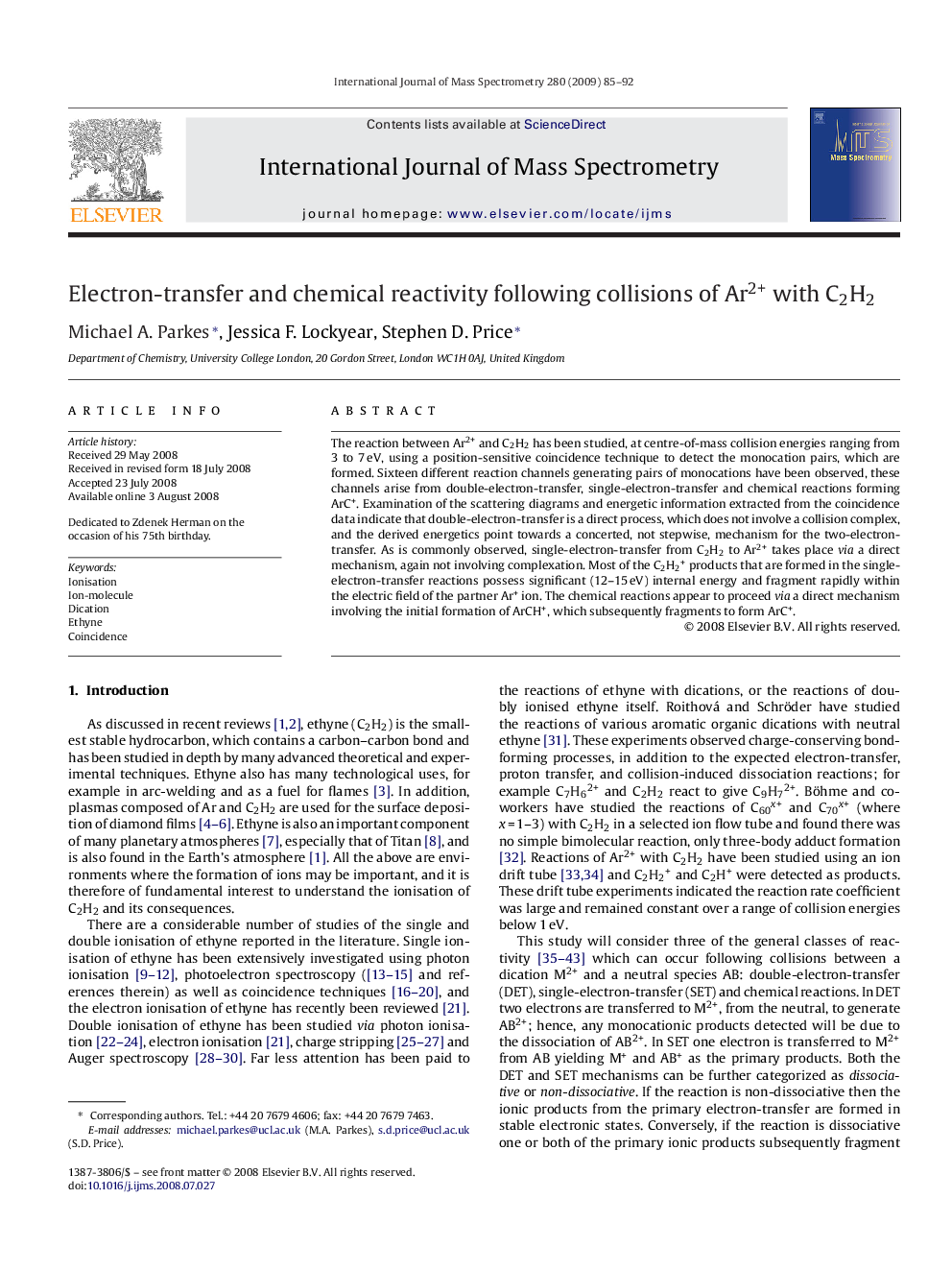| Article ID | Journal | Published Year | Pages | File Type |
|---|---|---|---|---|
| 1194810 | International Journal of Mass Spectrometry | 2009 | 8 Pages |
The reaction between Ar2+ and C2H2 has been studied, at centre-of-mass collision energies ranging from 3 to 7 eV, using a position-sensitive coincidence technique to detect the monocation pairs, which are formed. Sixteen different reaction channels generating pairs of monocations have been observed, these channels arise from double-electron-transfer, single-electron-transfer and chemical reactions forming ArC+. Examination of the scattering diagrams and energetic information extracted from the coincidence data indicate that double-electron-transfer is a direct process, which does not involve a collision complex, and the derived energetics point towards a concerted, not stepwise, mechanism for the two-electron-transfer. As is commonly observed, single-electron-transfer from C2H2 to Ar2+ takes place via a direct mechanism, again not involving complexation. Most of the C2H2+ products that are formed in the single-electron-transfer reactions possess significant (12–15 eV) internal energy and fragment rapidly within the electric field of the partner Ar+ ion. The chemical reactions appear to proceed via a direct mechanism involving the initial formation of ArCH+, which subsequently fragments to form ArC+.
